Foreword / YouTube Video Review
I purchased these speakers myself to review with funds from Patreon/PayPal/Affiliate Link revenue. If you’d like to help in this regard please see the “support” section at the bottom of this review. Thanks!
It’s worth noting I reviewed the little brother to this, the B1+, previously. Link is here.
The review on this website is a brief overview and summary of the objective performance of this speaker. It is not intended to be a deep dive. Moreso, this is information for those who prefer “just the facts” and prefer to have the data without the filler. The video below has more discussion.
Information and Photos
Manufacturer’s information can be found here.
Approximate retail price for these is $449/pair USD.
CTA-2034 (SPINORAMA) and Accompanying Data
All data collected using Klippel’s Near-Field Scanner. The Near-Field-Scanner 3D (NFS) offers a fully automated acoustic measurement of direct sound radiated from the source under test. The radiated sound is determined in any desired distance and angle in the 3D space outside the scanning surface. Directivity, sound power, SPL response and many more key figures are obtained for any kind of loudspeaker and audio system in near field applications (e.g. studio monitors, mobile devices) as well as far field applications (e.g. professional audio systems). Utilizing a minimum of measurement points, a comprehensive data set is generated containing the loudspeaker’s high resolution, free field sound radiation in the near and far field. For a detailed explanation of how the NFS works and the science behind it, please watch the below discussion with designer Christian Bellmann:
Initially, I measured the speaker at the tweeter but found that the best response was actually at the top of the woofer. Therefore, the reference plane in this test is at the top of the woofer. I have included some additional testing with the reference point at the tweeter at the bottom of this review.
Measurements are provided in a format in accordance with the Standard Method of Measurement for In-Home Loudspeakers (ANSI/CTA-2034-A R-2020). For more information, please see this link.
CTA-2034 / SPINORAMA:
The On-axis Frequency Response (0°) is the universal starting point and in many situations it is a fair representation of the first sound to arrive at a listener’s ears.
The Listening Window is a spatial average of the nine amplitude responses in the ±10º vertical and ±30º horizontal angular range. This encompasses those listeners who sit within a typical home theater audience, as well as those who disregard the normal rules when listening alone.
The Early Reflections curve is an estimate of all single-bounce, first-reflections, in a typical listening room.
Sound Power represents all of the sounds arriving at the listening position after any number of reflections from any direction. It is the weighted rms average of all 70 measurements, with individual measurements weighted according to the portion of the spherical surface that they represent.
Sound Power Directivity Index (SPDI): In this standard the SPDI is defined as the difference between the listening window curve and the sound power curve.
Early Reflections Directivity Index (EPDI): is defined as the difference between the listening window curve and the early reflections curve. In small rooms, early reflections figure prominently in what is measured and heard in the room so this curve may provide insights into potential sound quality.

Early Reflections Breakout:
Floor bounce: average of 20º, 30º, 40º down
Ceiling bounce: average of 40º, 50º, 60º up
Front wall bounce: average of 0º, ± 10º, ± 20º, ± 30º horizontal
Side wall bounces: average of ± 40º, ± 50º, ± 60º, ± 70º, ± 80º horizontal
Rear wall bounces: average of 180º, ± 90º horizontal

Estimated In-Room Response:
In theory, with complete 360-degree anechoic data on a loudspeaker and sufficient acoustical and geometrical data on the listening room and its layout it would be possible to estimate with good precision what would be measured by an omnidirectional microphone located in the listening area of that room. By making some simplifying assumptions about the listening space, the data set described above permits a usefully accurate preview of how a given loudspeaker might perform in a typical domestic listening room. Obviously, there are no guarantees, because individual rooms can be acoustically aberrant. Sometimes rooms are excessively reflective (“live”) as happens in certain hot, humid climates, with certain styles of interior décor and in under-furnished rooms. Sometimes rooms are excessively “dead” as in other styles of décor and in some custom home theaters where acoustical treatment has been used excessively. This form of post processing is offered only as an estimate of what might happen in a domestic living space with carpet on the floor and a “normal” amount of seating, drapes and cabinetry.
For these limited circumstances it has been found that a usefully accurate Predicted In-Room (PIR) amplitude response, also known as a “room curve” is obtained by a weighted average consisting of 12 % listening window, 44 % early reflections and 44 % sound power. At very high frequencies errors can creep in because of excessive absorption, microphone directivity, and room geometry. These discrepancies are not considered to be of great importance.

Horizontal Frequency Response (0° to ±90°):

Vertical Frequency Response (0° to ±40°):

Horizontal Contour Plot (normalized):

Vertical Contour Plot (normalized):
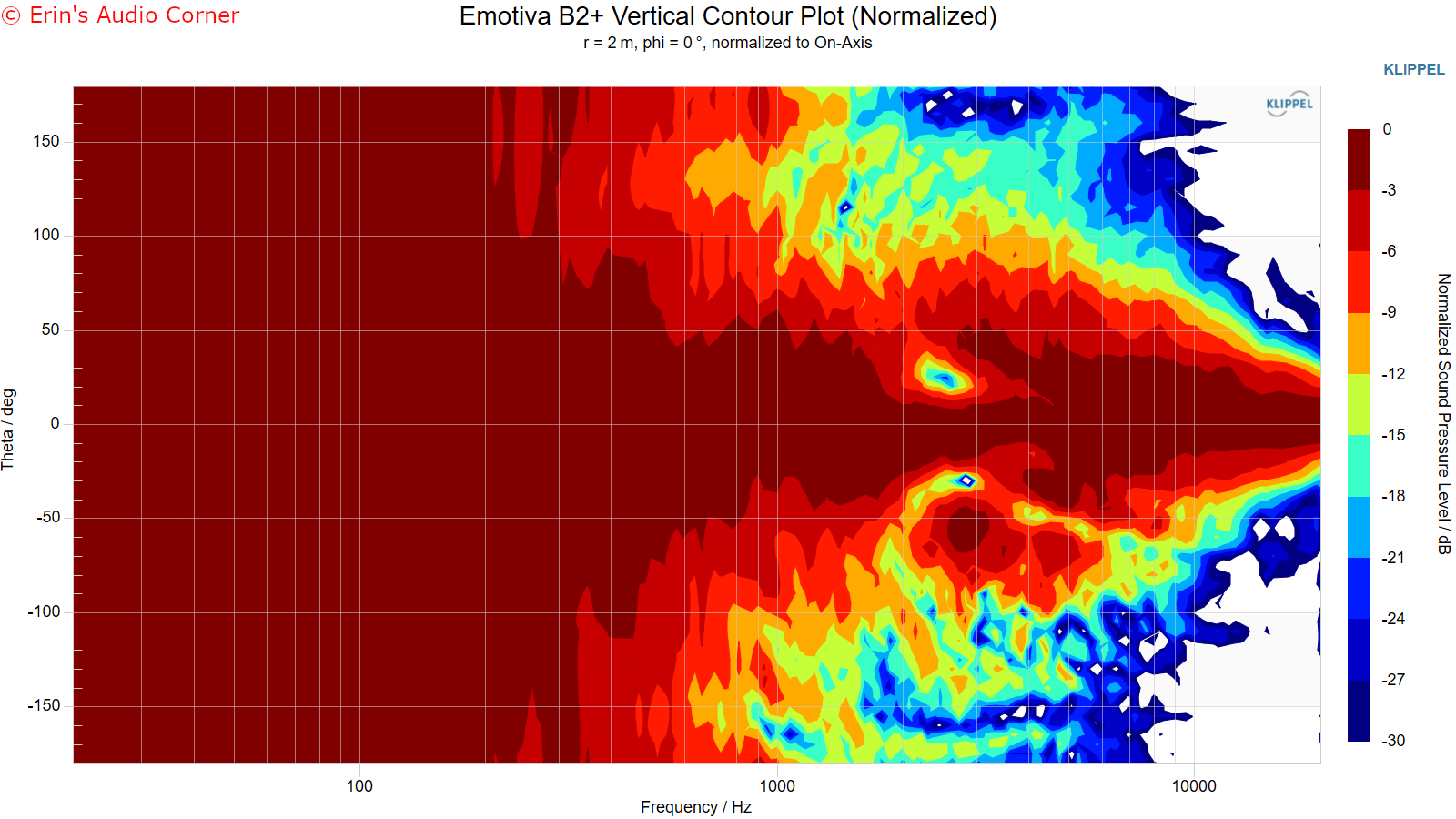
“Globe” Plots
Horizontal Polar (Globe) Plot:
This represents the sound field at 2 meters - above 200Hz - per the legend in the upper left.
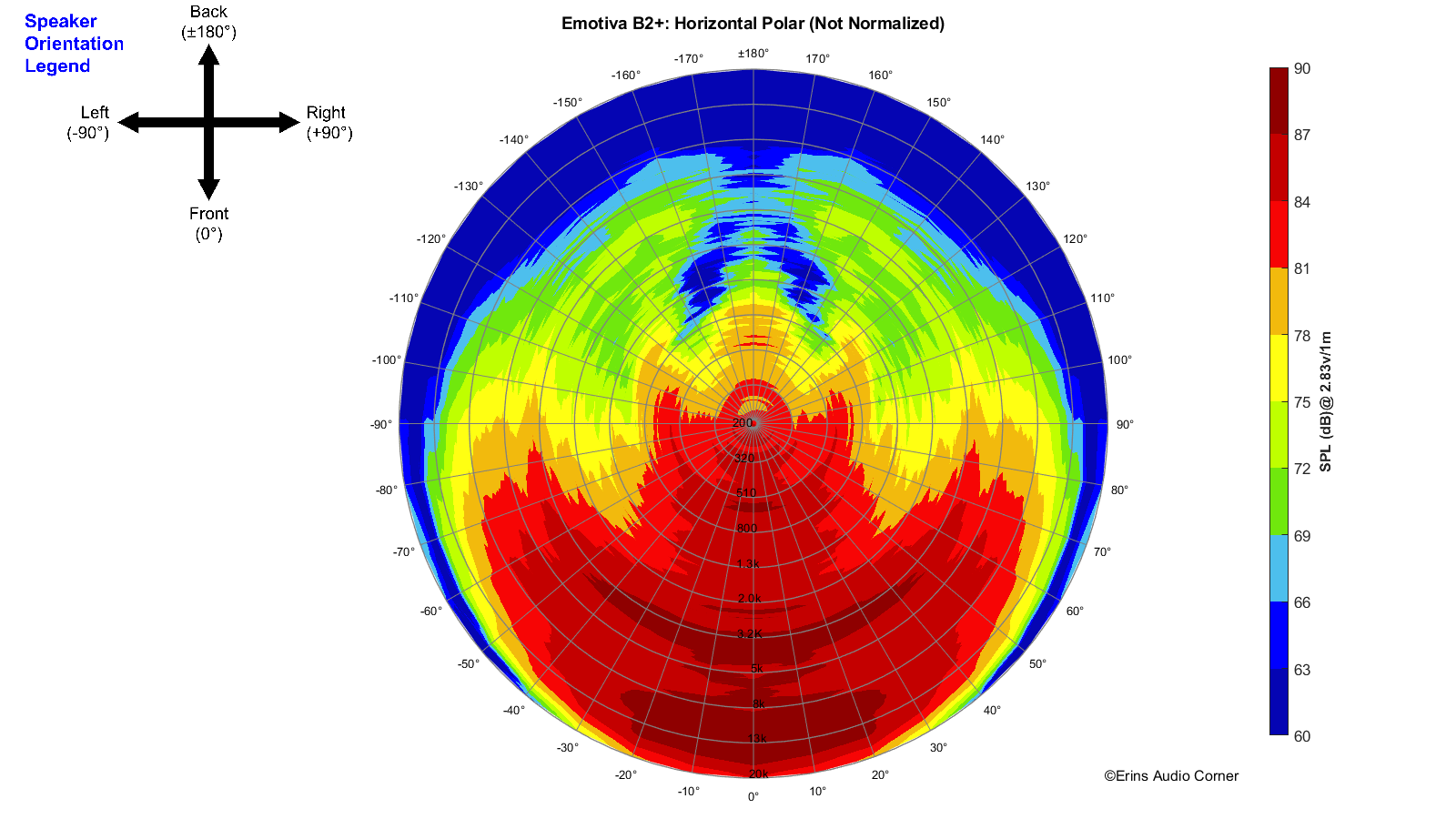
Vertical Polar (Globe) Plot:
This represents the sound field at 2 meters - above 200Hz - per the legend in the upper left.
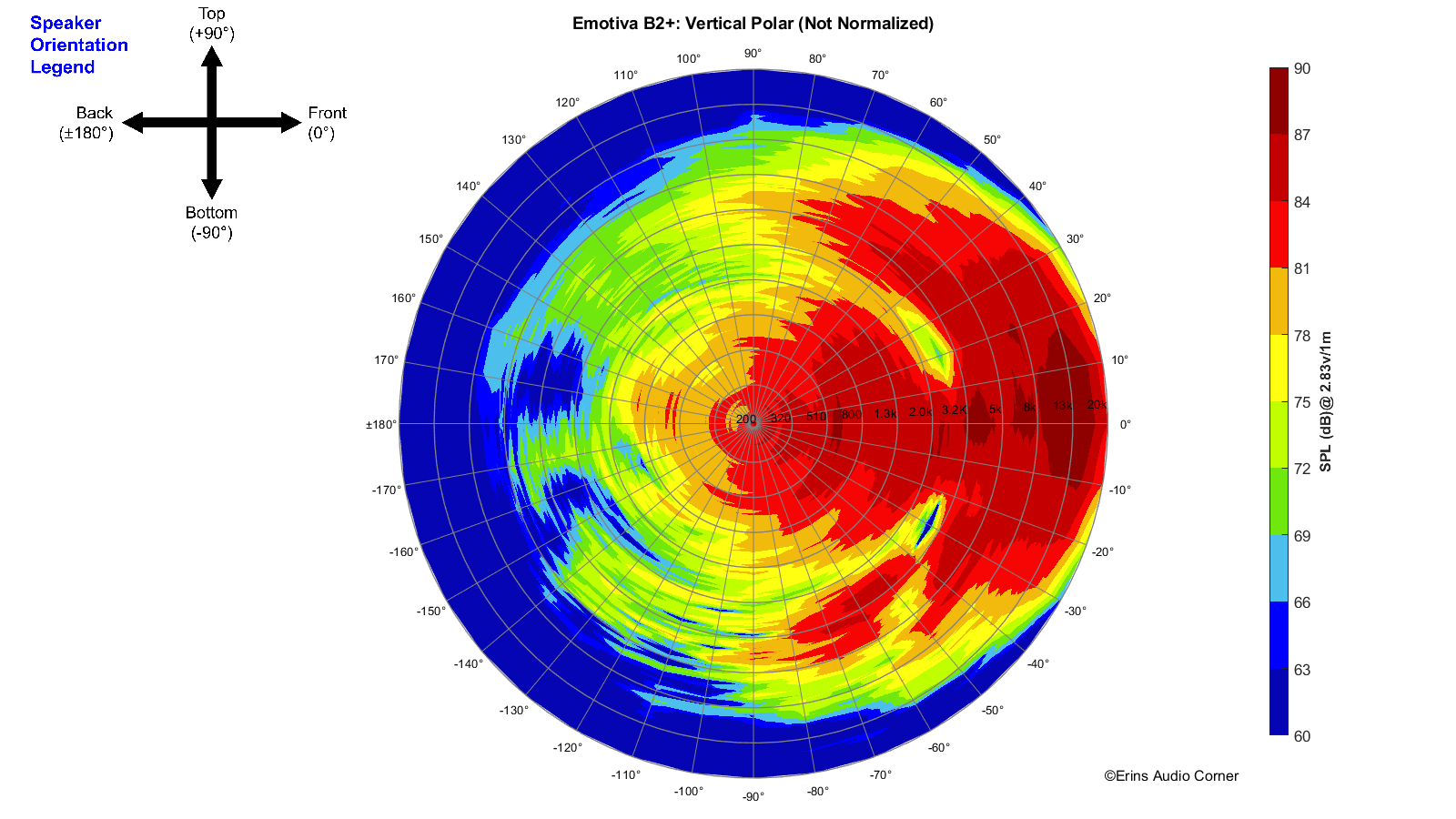
Additional Measurements
Response Linearity
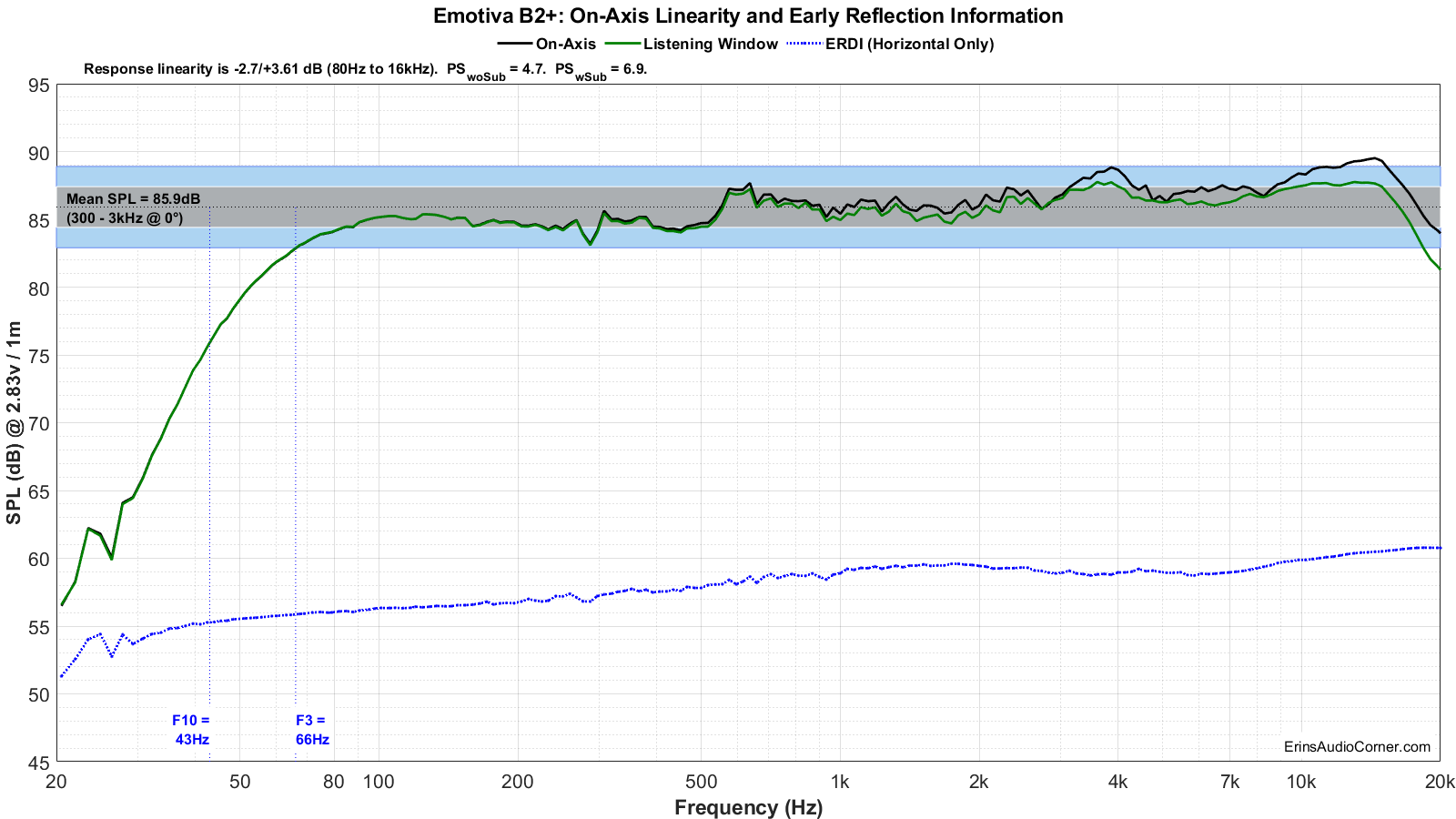
Impedance Magnitude and Phase
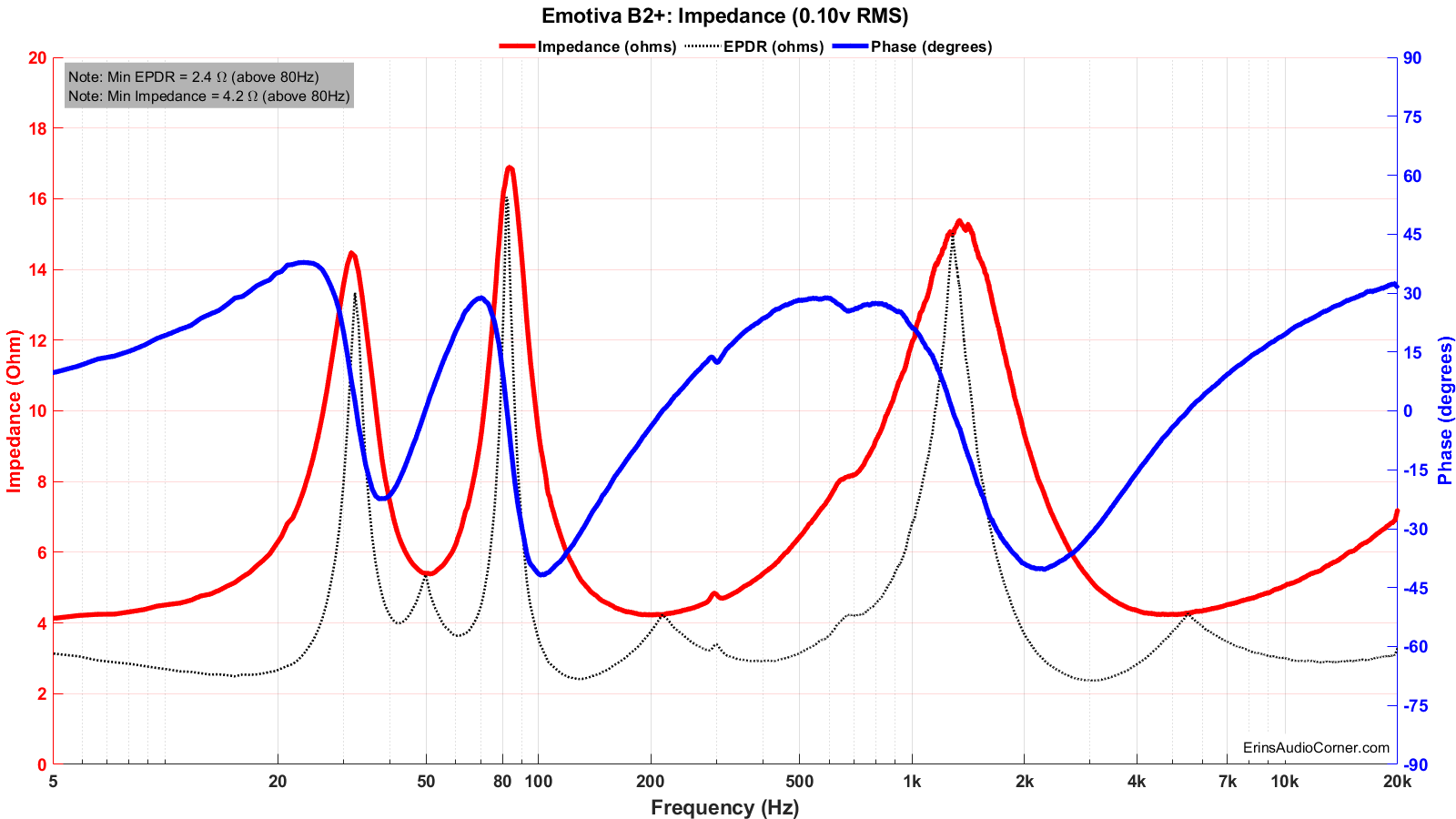
Step Response
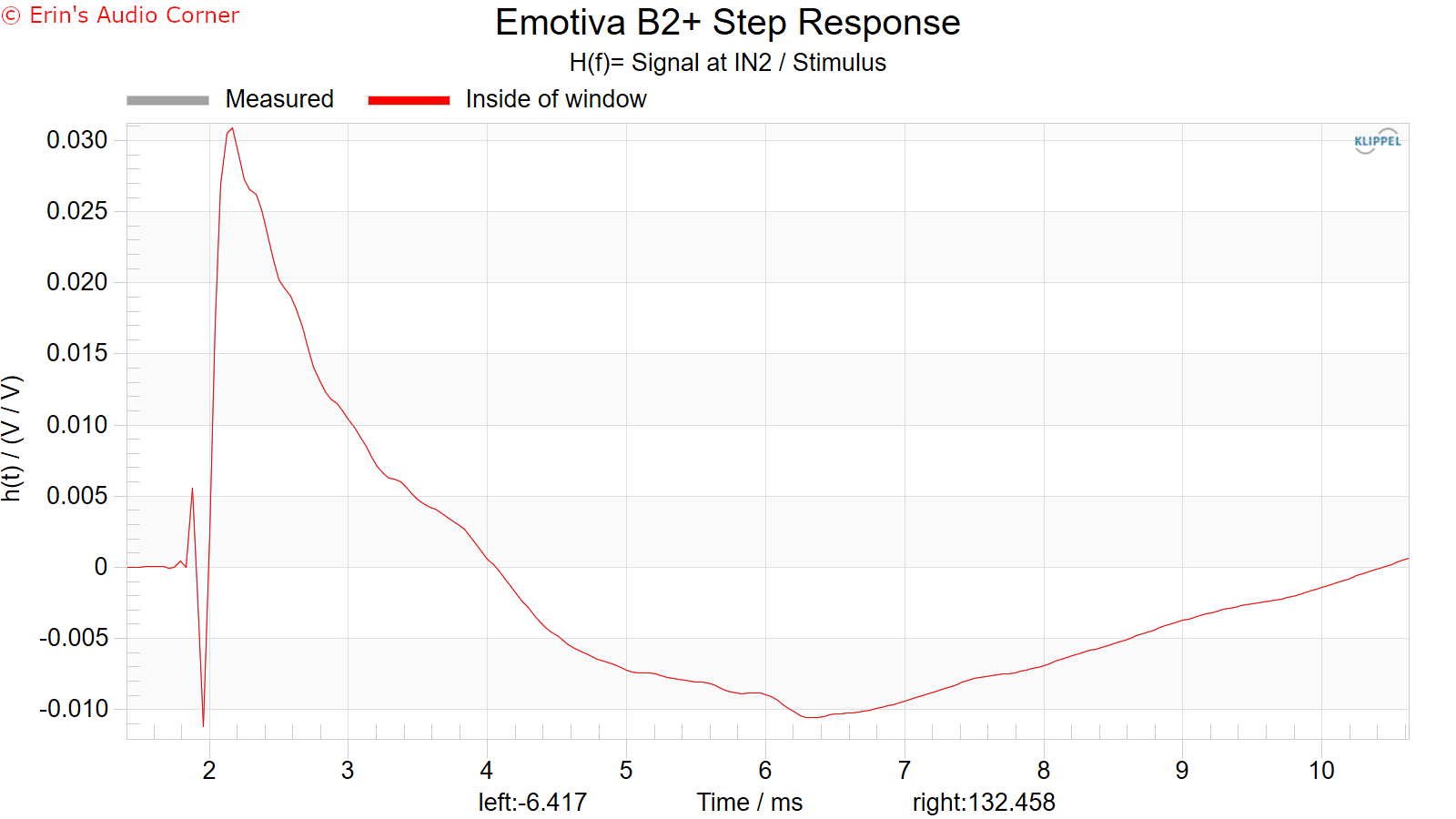
Group Delay
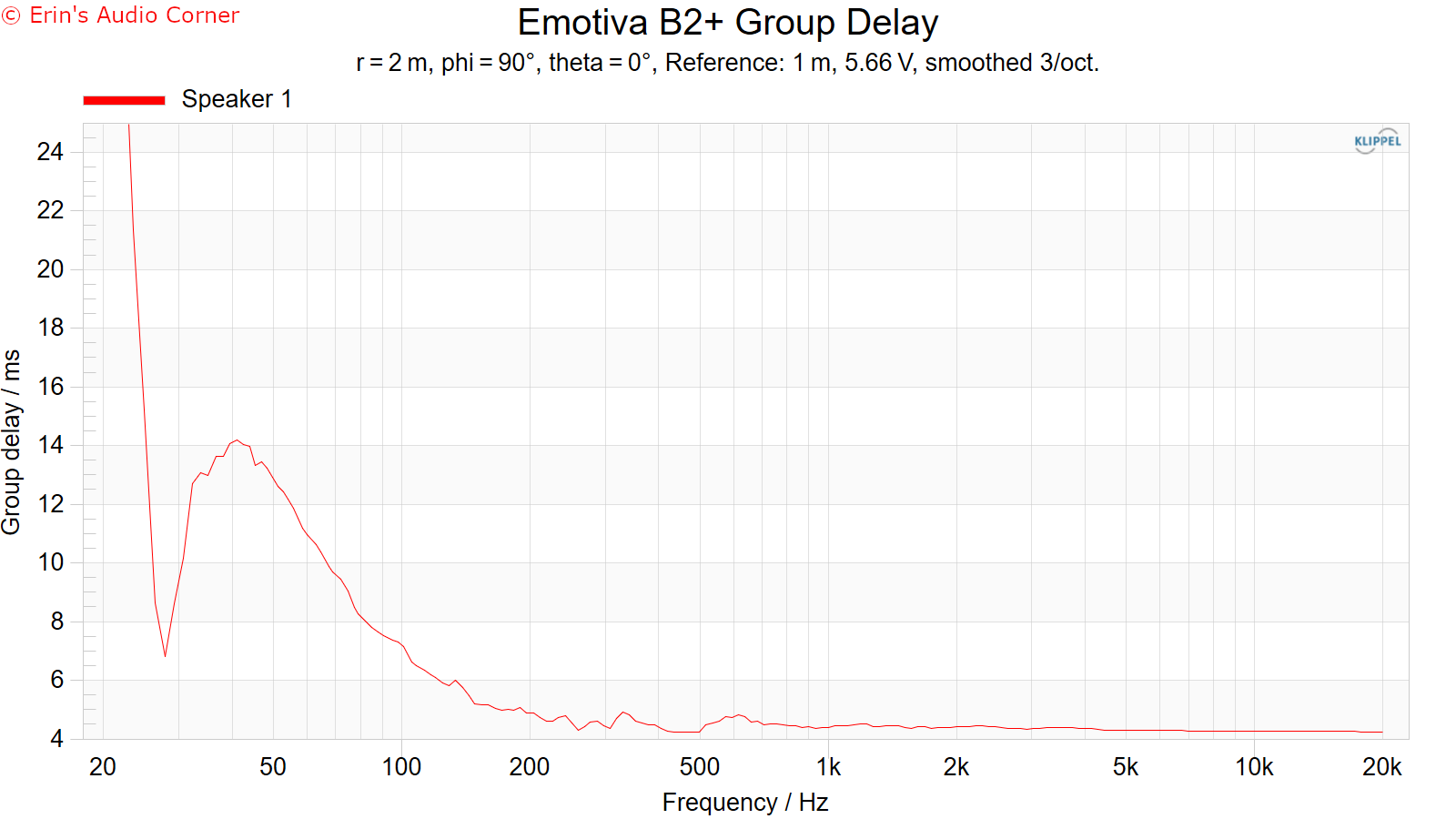
Harmonic Distortion
Harmonic Distortion at 86dB @ 1m:
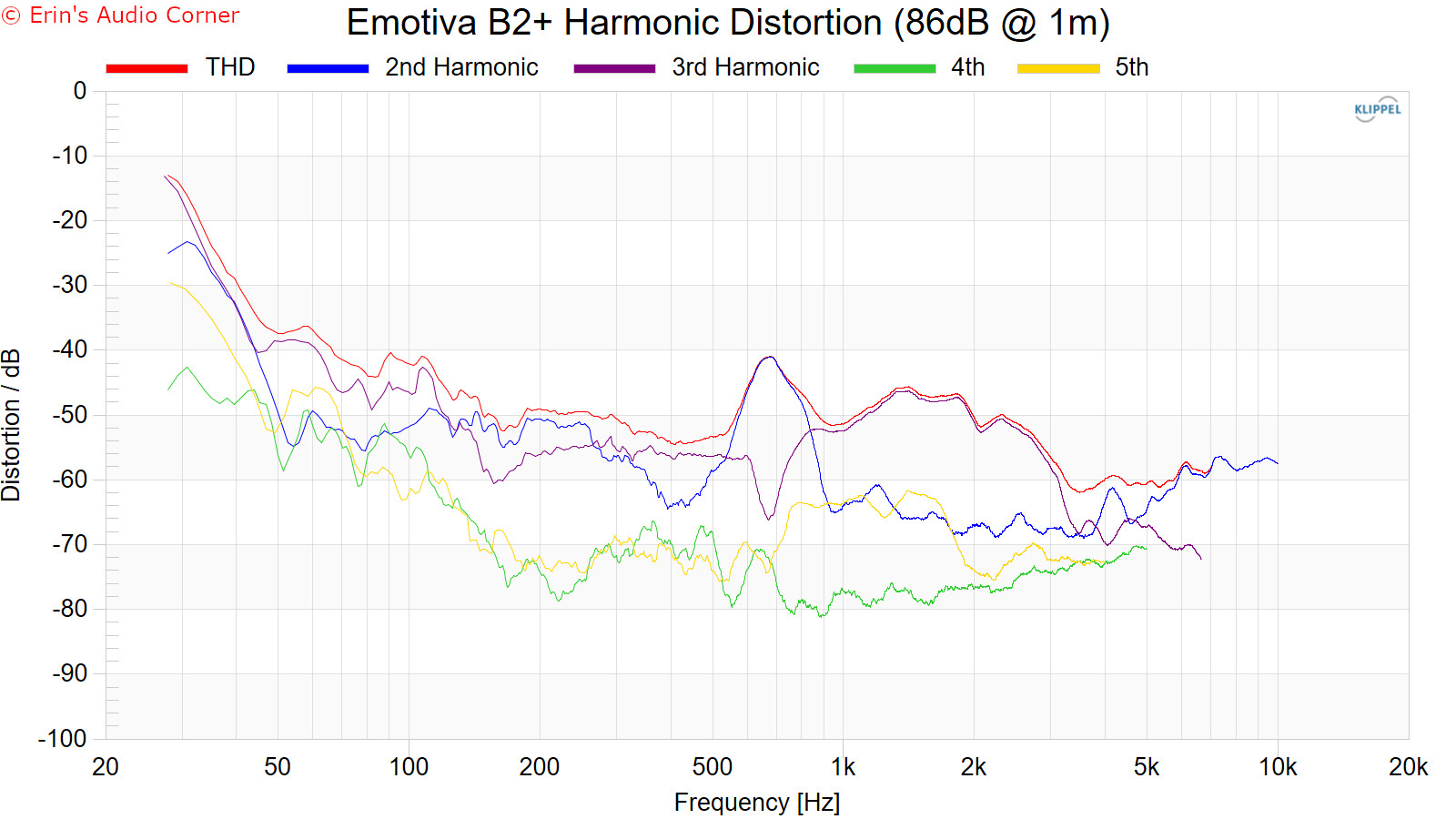
Harmonic Distortion at 96dB @ 1m:
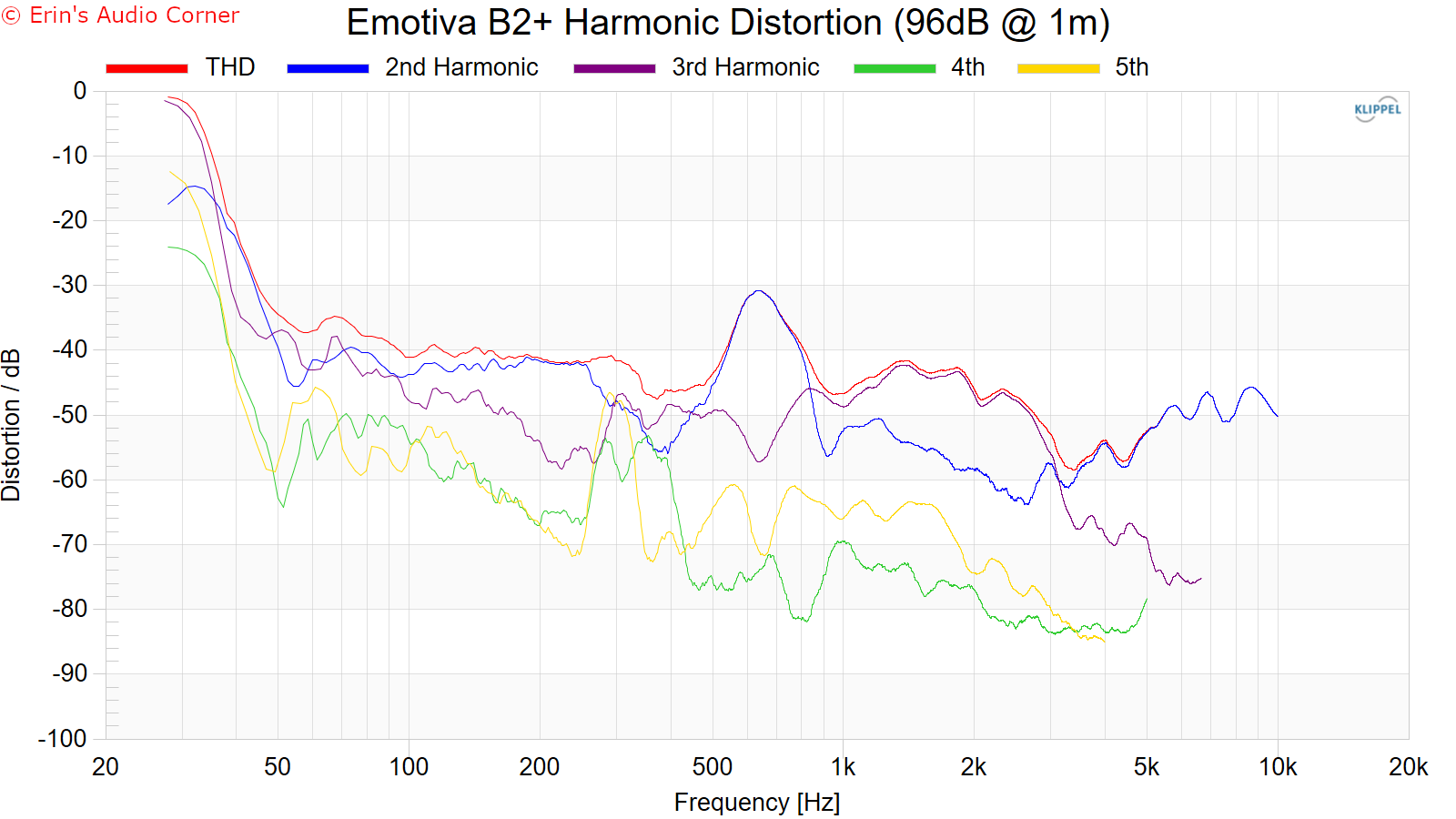
Dynamic Range (Instantaneous Compression Test)
The below graphic indicates just how much SPL is lost (compression) or gained (enhancement; usually due to distortion) when the speaker is played at higher output volumes instantly via a 2.7 second logarithmic sine sweep referenced to 76dB at 1 meter. The signals are played consecutively without any additional stimulus applied. Then normalized against the 76dB result.
The tests are conducted in this fashion:
- 76dB at 1 meter (baseline; black)
- 86dB at 1 meter (red)
- 96dB at 1 meter (blue)
- 102dB at 1 meter (purple)
The purpose of this test is to illustrate how much (if at all) the output changes as a speaker’s components temperature increases (i.e., voice coils, crossover components) instantaneously.
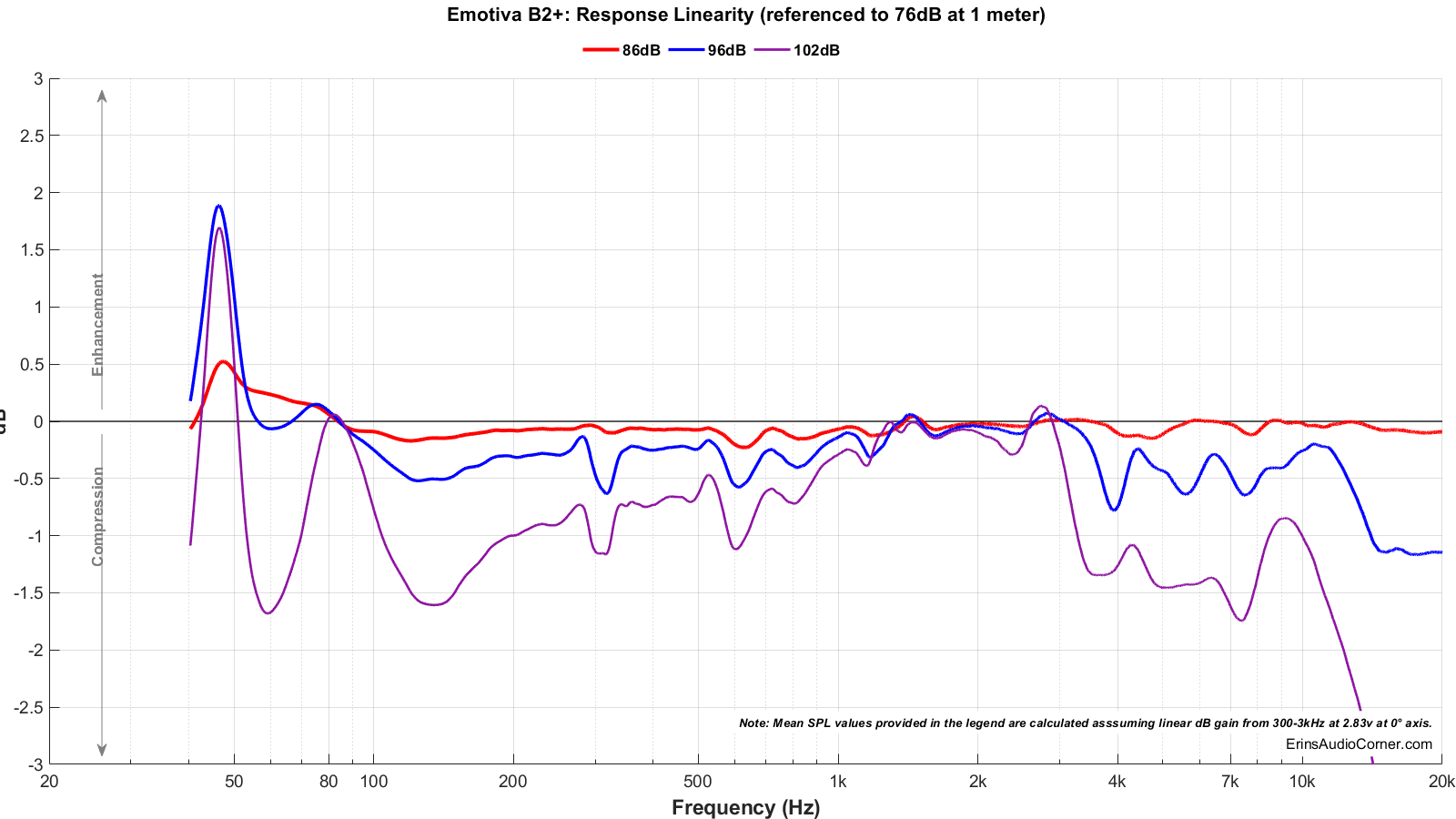
Multitone Distortion
The following tests are conducted at (4) approximate equivalent output volumes: 70/79/87/96dB @ 1 meter. The (4) voltages listed in the legend result in these SPL values.
The test was conducted in (3) manners:
- Full bandwidth (20Hz to 20kHz)
- 80Hz to 20kHz
The reason for the two measurements is to simulate running the speaker full range vs using a high-pass filter at 80Hz. However, note: the 2nd test low frequency limit at 80Hz is a “brick wall” and doesn’t quite emulate a standard filter of 12 or 24dB/octave. But… it’s close enough.
For information on how to read the below data, watch this video:
- Full bandwidth (20Hz to 20kHz)
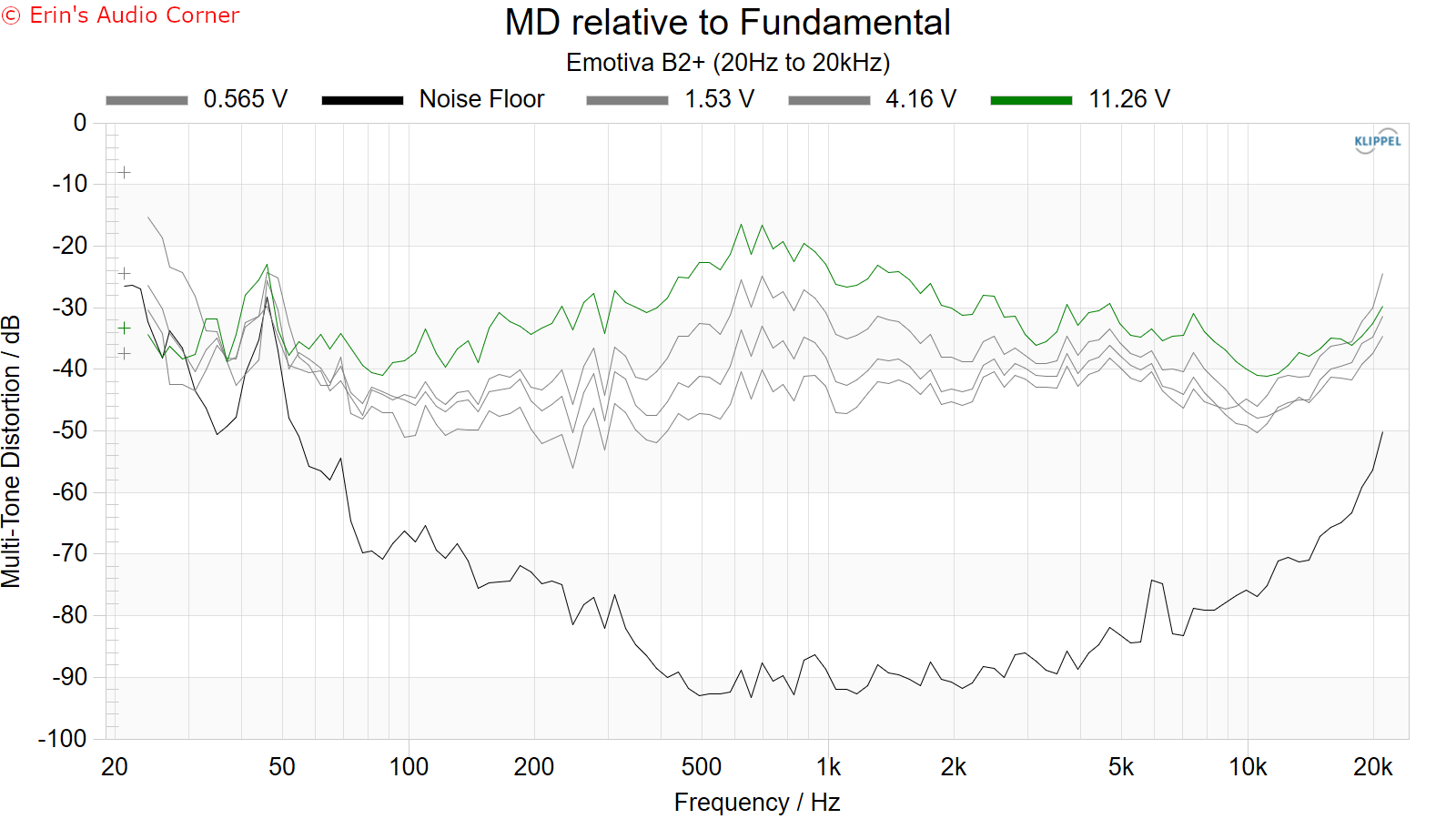
- 80Hz to 20kHz
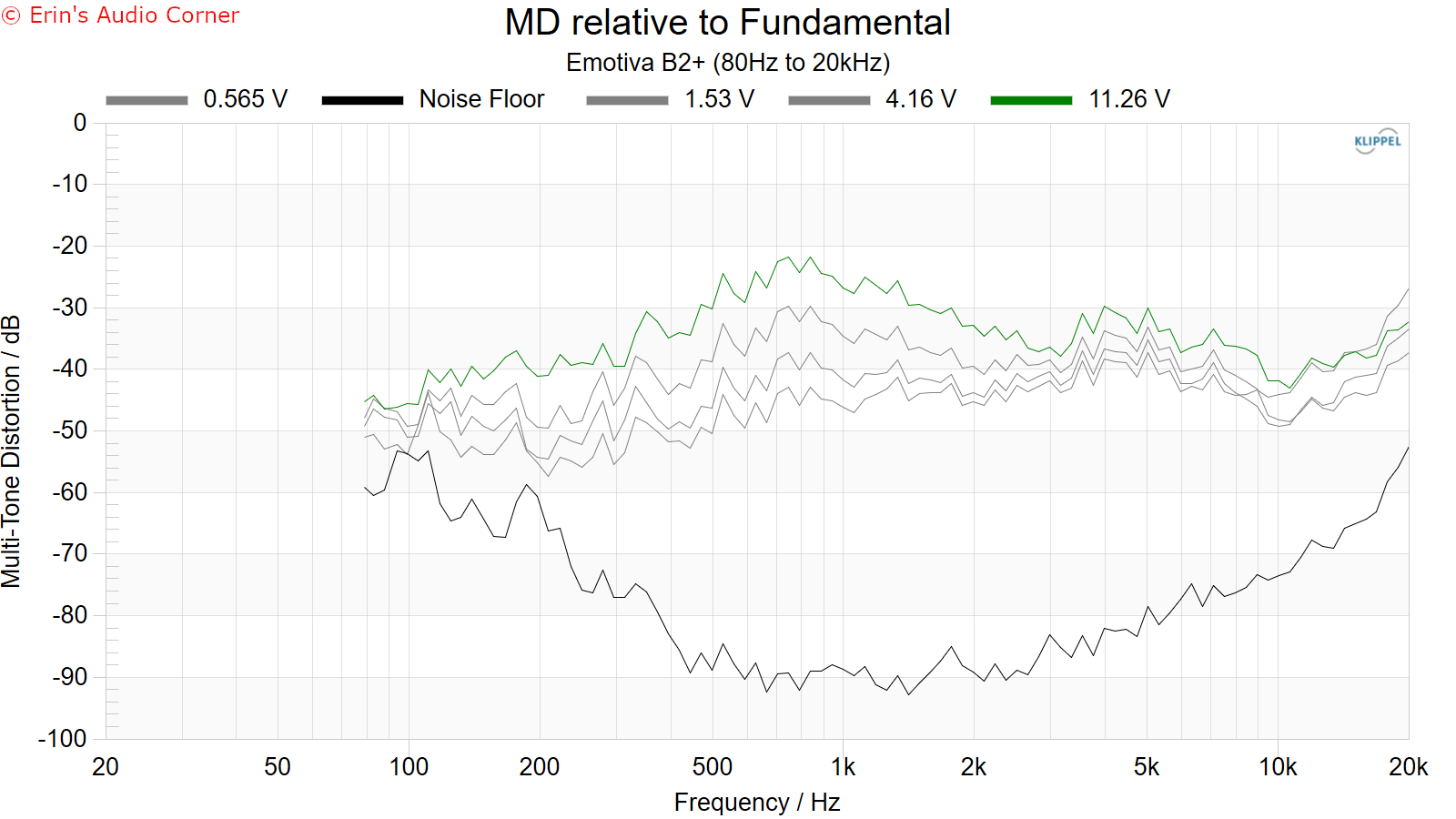
Testing with EQ enabled
As I said previously, the test of this speaker was conducted at the best axis which was with the reference point between the mid and the tweeter. However, I have provided the response with the microphone (and, thus, your ears) at the tweeter level. Below this I have also provided the response of the speaker with equalization applied should you desire to set the speaker up and then EQ it to flat on-axis with something like the MiniDSP 2x4HD.
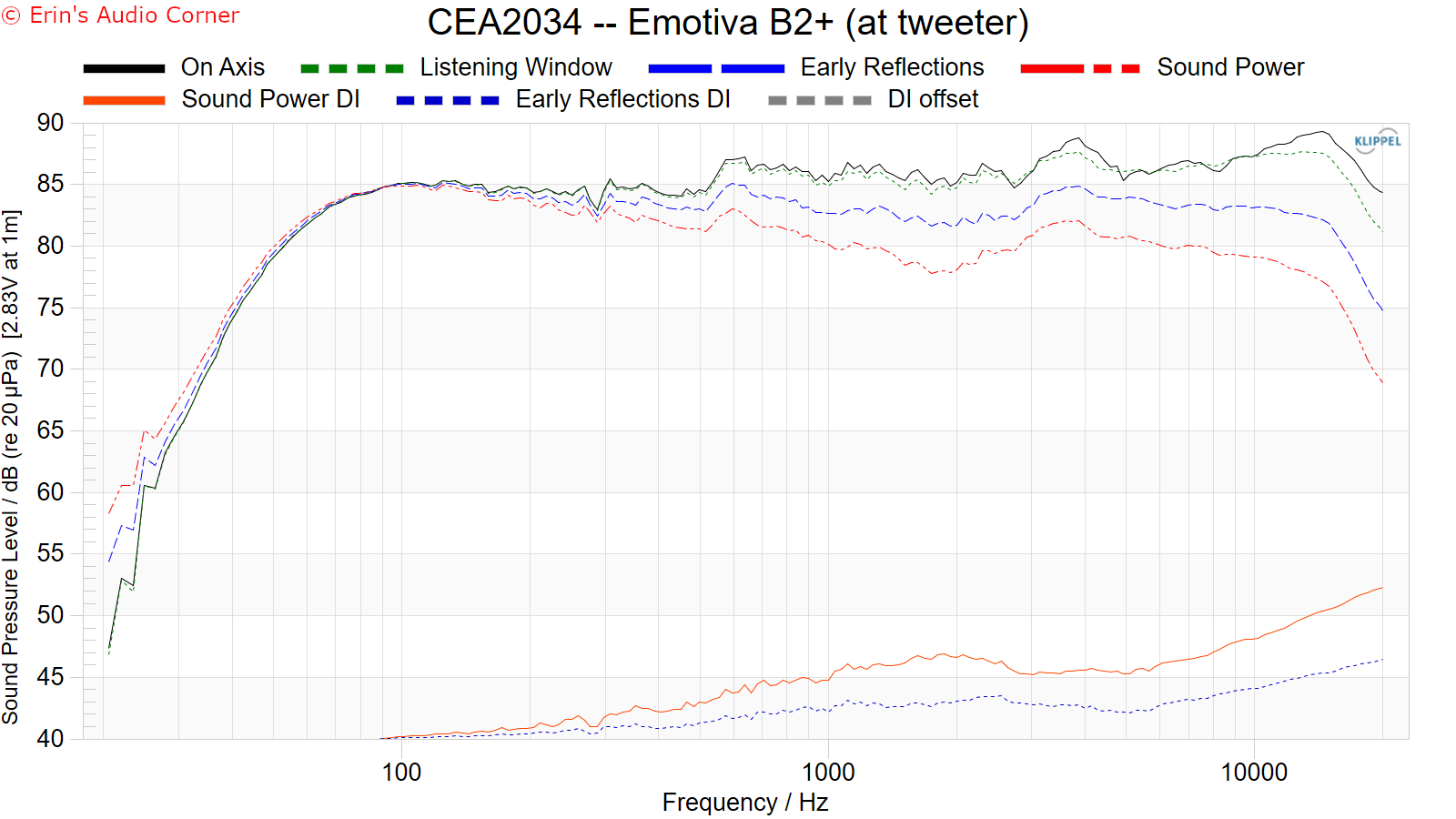
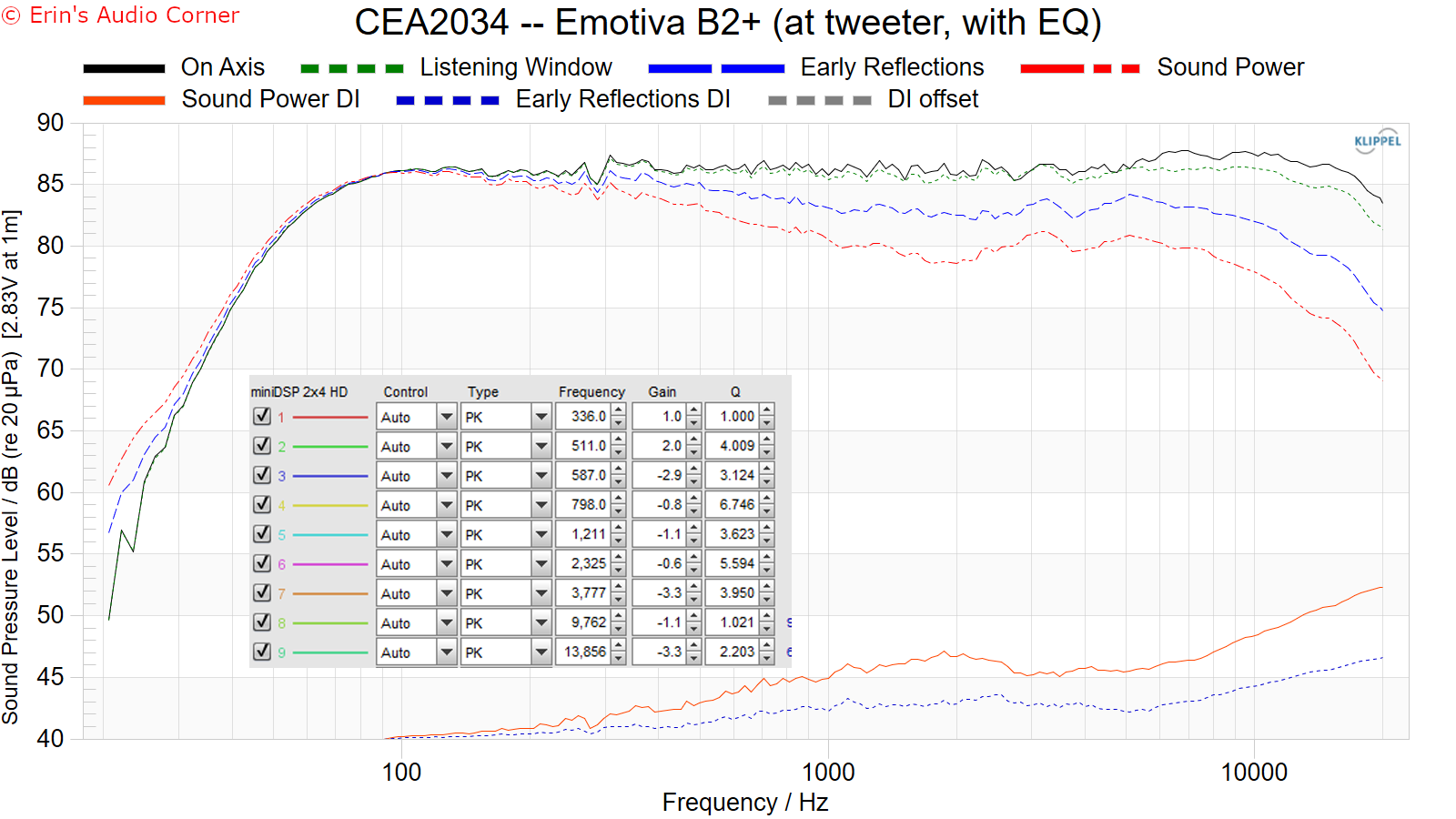
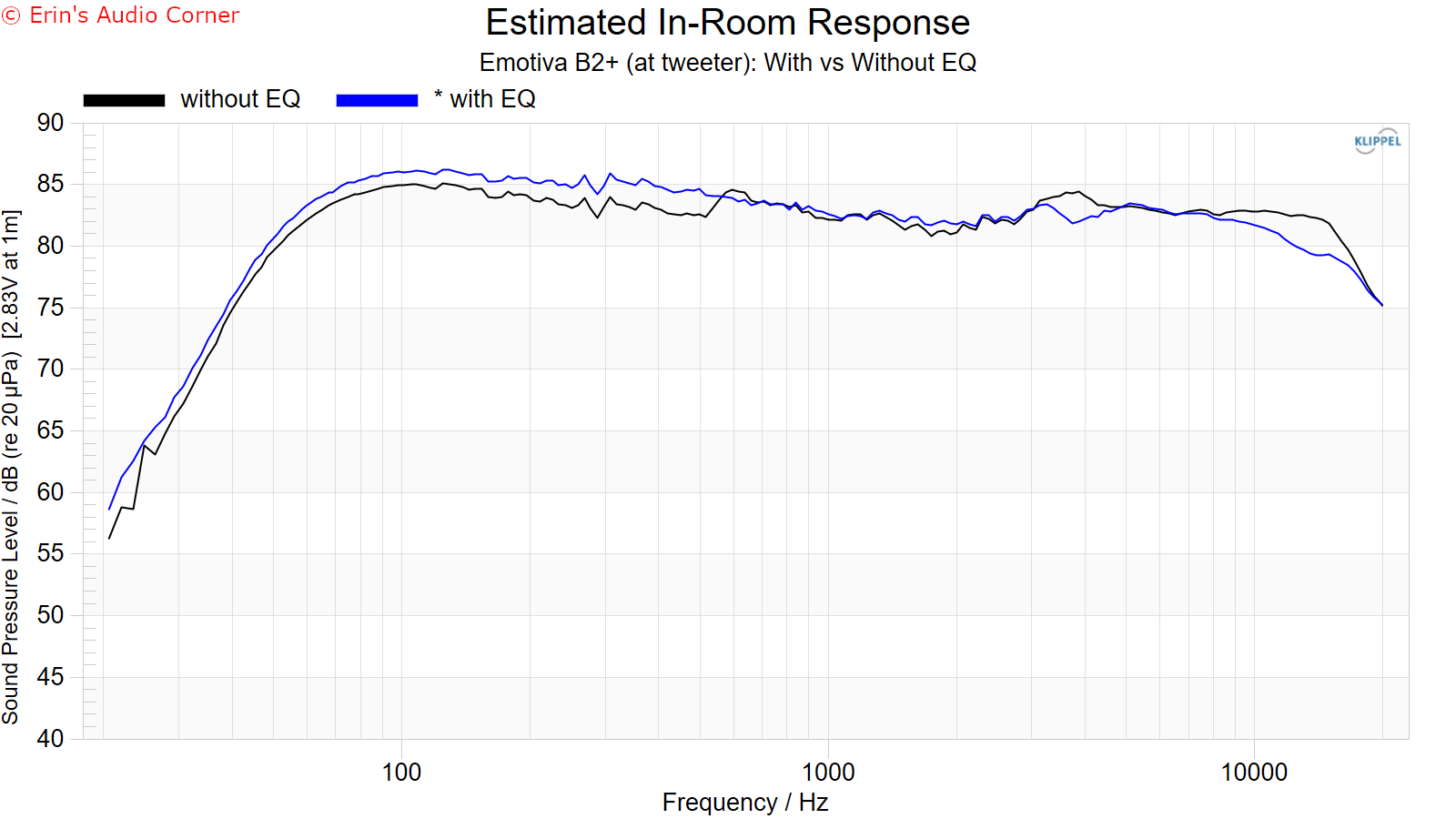
Parting / Random Thoughts
As stated in the Foreword, this written review is purposely a cliff’s notes version. For details about the performance (objectively and subjectively) please watch the YouTube video. But a couple quick notes based on my listening and what I see in the data:
Well, when I first fired up the speakers I noticed a few problem areas to my ears: 4kHz and what I thought was 8kHz. Why? I heard an sharpness in the treble with certain stringed instruments (electric guitar on Dire Straits) and what sounded like sibilance. Based on the data, I’m confident in my estimate at 4kHz but I’m not seeing an issue so much at 8kHz. Rather, I do see a flattening of the treble in this region but I’m not sure if this is exactly what I was hearing. Odds are it’s some combination. The crossover appears to be in the 2-3kHz evidenced by the DI but most notably the Estimated In-Room Response increasing in amplitude here. This is a tell-tale sign of a directivity mismatch where the midwoofer is quite narrow in radiation compared to the tweeter which is very wide in radiation. This mismatch creates a “hotter” treble that - while it can be tamed - cannot be resolved via EQ. A redesigned crossover would need to be implemented to fix this imbalance.
There is also a discontinuity in the midrange that causes the midrange/upper midbass to sound a bit more “thin” compared to the midrange/upper midrange. This is evidenced by the 2-3dB difference in output above/below 500Hz. I might be inclined to say that placing the speaker near a wall but this speaker is omnidirectional only up to about 300Hz. Which means the bass radiated to the back would be boosted as it, too, is reinforced by the wall. However, there is about 300-500Hz of midrange that won’t quite be reinforced as fully, resulting in a mild dip at this range which causes the upper midbass to sound a bit hollow and thin.
Tonally, the high frequency bump is just too much to my ears when the speaker is aimed at me. At first the speaker sounds like it has some “sparkle” and “shine” to it; most notably with cymbal rides and crashes. It has tons of “zing!” and “pep!” but after a couple minutes the shine (pun intended) wears off and I was just left with a speaker that sounded a bit too treble heavy. I did find that turning them off-axis by at least 10° out into the room was the best for me because it helped to tame the HF a bit. In doing so, it made the speaker more pleasurable for me. I recommend turning the speaker off-axis or investing in some good acoustic absorption on the sidewalls and the wall behind you to absorb the energy above 2kHz.
The extra output is nice and the bass is well controlled.
Support / Contribute
If you find this review helpful and want to help support the cause that would be AWESOME! There are a few ways you can do so below. Your support helps me pay for new items to test, hardware, miscellaneous items needed for testing, new speakers to review and costs of the site’s server space and bandwidth. Any help is very much appreciated.
Join my Patreon: Become a Patron!
If you find yourself interested in buying this speaker, please consider using one of my affiliate links below. It costs you no additional money but does help me earn a small commission which helps me pay for gear to test and other review gear.
You can also join my Facebook and YouTube pages if you’d like to follow along with updates.